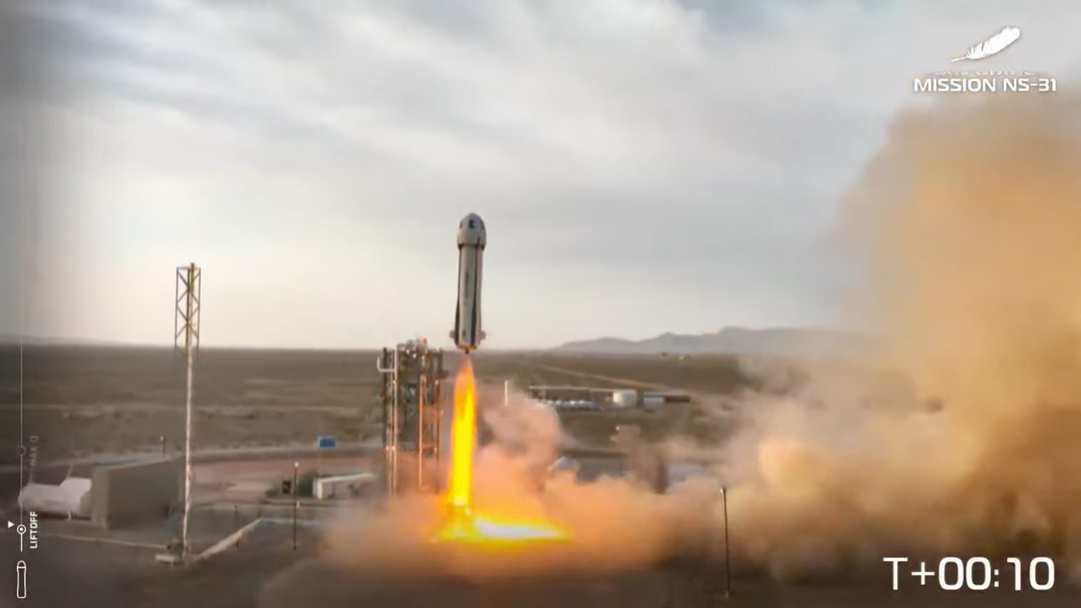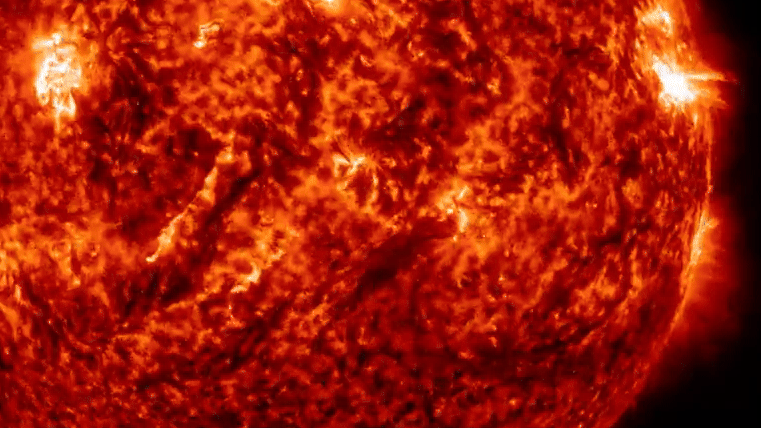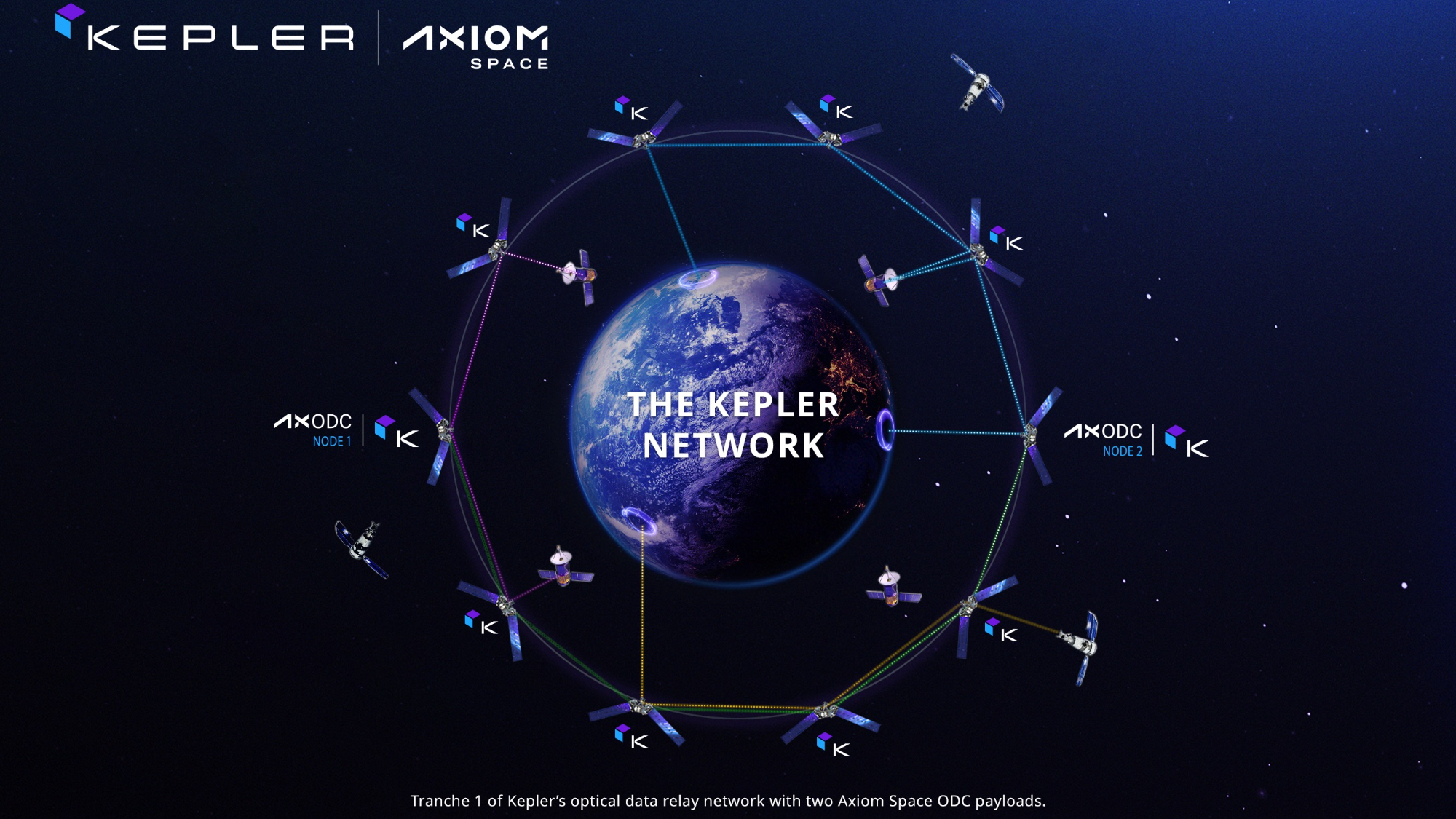NASA astronauts on spacewalk replace faulty antenna outside space station
Spacewalkers restore redundancy for two-way voice and data between the space station and Earth.

Two NASA astronauts on a spacewalk replaced a faulty antenna outside the International Space Station, restoring one of the ways the orbiting outpost communicates with Earth.
Expedition 66 crewmates Tom Marshburn and Kayla Barron completed the 6-hour, 32-minute extravehicular activity (EVA) on Thursday, Dec. 2, having installed a spare S-band Antenna Subassembly (SASA) on the station's backbone truss in place of a degraded unit, which was stowed on an exterior pallet.
Marshburn and Barron began the spacewalk at 6:15 a.m. EST (1115 GMT), switching their extravehicular mobility unit (EMU) spacesuits to internal battery power shortly before exiting the station's U.S. Quest airlock. After gathering up their respective tools, the astronauts then headed to their first planned workstations.
Spacewalks: How they work and major milestones
While Marshburn retrieved a portable foot restraint to mount to the end of the station's Canadarm2 robotic arm, Barron made her way to the ExPRESS (EXpedite the PRocessing of Experiments to Space Station) Logistics Carrier-3 (ELC-3), a platform mounted on the Port 1 (P1) truss where the spare antenna was stored. There, Barron worked on temporarily stowing the tools she and Marshburn would need for the replacement and began preparing the spare SASA for its removal from the pallet.
Marshburn, meanwhile, mounted the end of the 58-foot (17.6 meters) Canadarm2 to be positioned near the failed SASA. NASA astronaut Raja Chari and Matthias Maurer of the European Space Agency (ESA) operated the robotic arm's controls from inside the station to move Marshburn into place.
The SASA is used to transmit low-rate voice and data to and from the ground. In September, the antenna on the P1 truss lost its ability to send signals down to Earth via NASA's Tracking and Data Relay Satellite System (TDRSS). Although another unit was still functioning and the space station still had full use of its high-rate KU-band communications system to relay video, mission managers decided to replace the faulty antenna to preserve redundancy.
Get the Space.com Newsletter
Breaking space news, the latest updates on rocket launches, skywatching events and more!
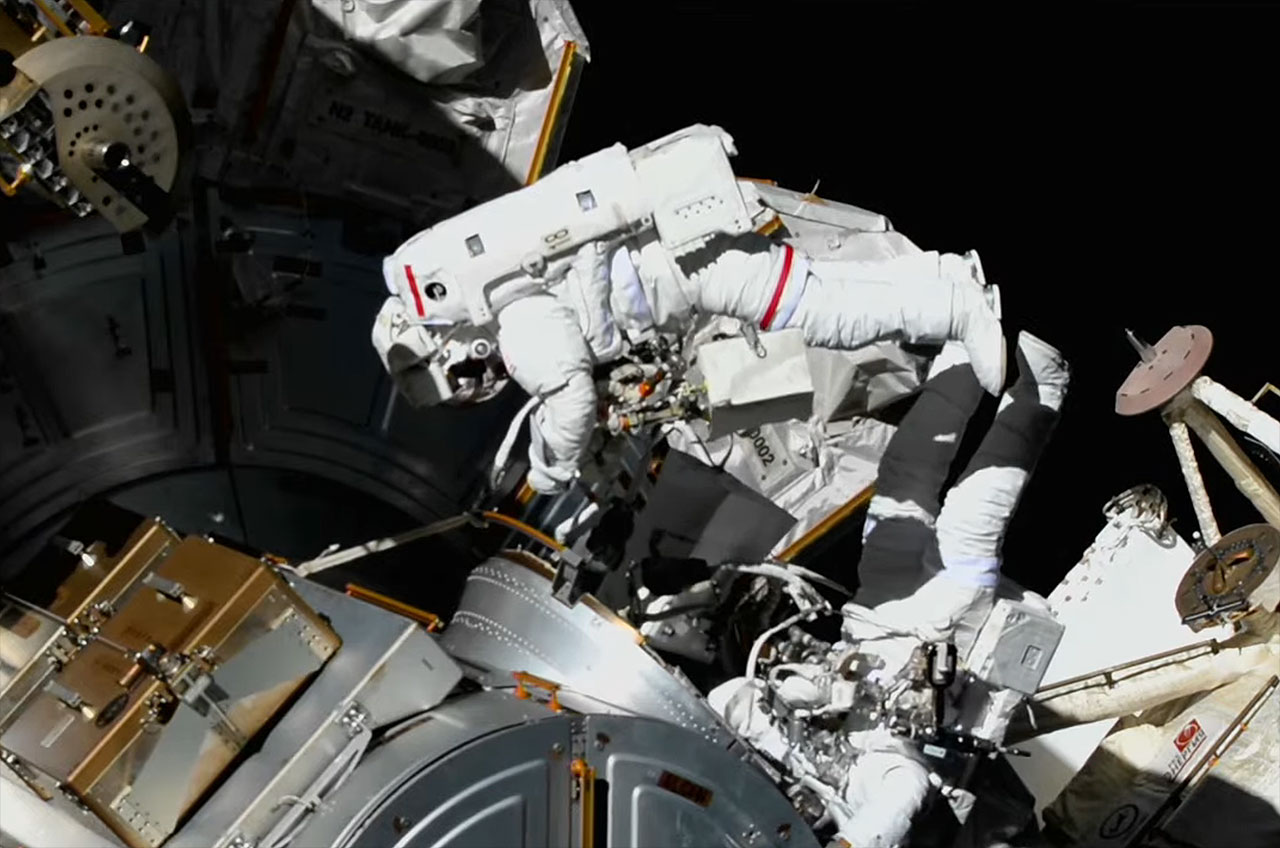
Marshburn installed stabilizing gimbal locks on the degraded SASA before removing it from the truss and temporarily securing it on ELC-3. He and Barron then released the replacement unit from the platform, including unwrapping a thermal blanket that had covered the spare SASA while it was stowed.
"I am grateful we are not trying to put that back on," Barron said with a laugh, referring to the blanket. "It is just a lot of Velcro — in very specific places."
After moving the replacement SASA to the P1 truss on the Canadarm2, Marshburn bolted it into place, ran cables and released gimbal locks that will allow the antenna to move. He and Barron then returned to the ELC to inspect and properly stow the faulty SASA on the pallet.
"From my vantage point, I can probably see at least 10 small MMOD [micrometeoroid orbital debris] strikes," Barron reported to astronaut Drew Morgan, the spacewalk's coordinator in Mission Control in Houston, perhaps spotting the reason the antenna lost some of its function.
Wrapping up their work with the antennas, the two astronauts draped the faulty unit with the thermal blanket earlier removed from its replacement. The two then performed a voice check with the newly installed SASA.
"We have a working SASA antenna, great job," radioed Morgan from Mission Control.
"That's fantastic," replied Marshburn.
"Awesome!" Barron exclaimed.
Barron gathered the tools she had brought out to the ELC platform and returned them to the airlock, while Marshburn rode the Canadarm2 to return the portable foot restraint to its original mount on the truss.
"Thanks for flying Canadarm airlines today. Make sure to tip your pilots if you enjoyed the ride," Chari joked from inside the station, radioing Marshburn as he got off the robotic arm.
Related: Building the International Space Station (photos)
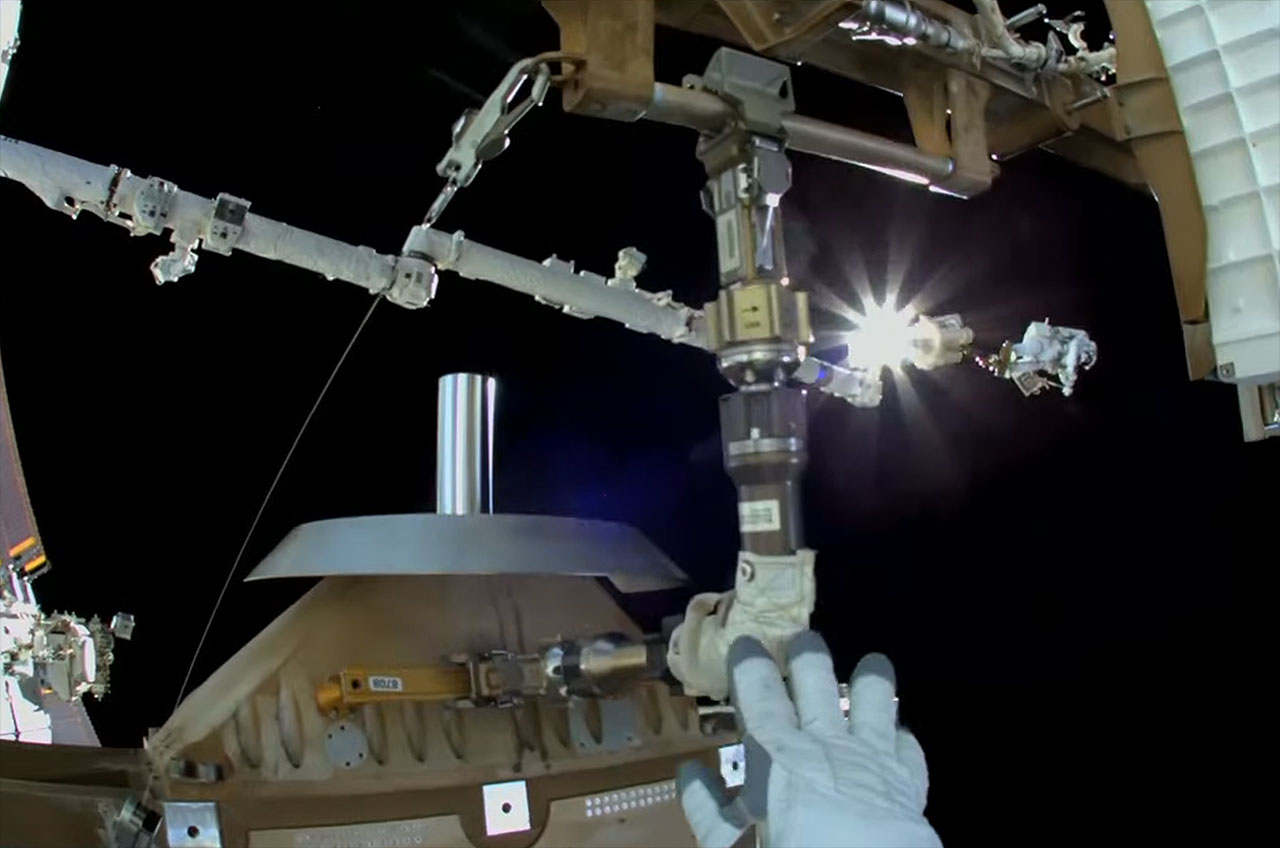
Having steadily worked more than an hour ahead of their schedule, the two spacewalkers were then given the go to tackle a few "get ahead" tasks. Barron loosened bolts on a battery unit to ease its future replacement and ran two long wire ties to secure a solar array bracket box, while Marshburn photographed a pip pin installed on a previous spacewalk.
The astronauts then re-entered the space station. The spacewalk came to an end at 12:47 p.m. EST (1747 GMT) as the Quest airlock began to repressurize.
Thursday's spacewalk was the fifth EVA for Marshburn and first for Barron. At 61, Marshburn is now the oldest person in the world to have conducted a spacewalk, surpassing Roscosmos cosmonaut Pavel Vinogradov, who previously set the record at 59 in 2013. Marshburn has now logged a total of 31 hours and 1 minute working in the vacuum of space.
The degraded SASA unit was launched by the space shuttle Discovery on its STS-92 mission in 2000. The replacement unit was delivered by Endeavour's final mission, STS-134, in 2011. A previous SASA replacement spacewalk was conducted in 2006 by STS-115 crewmates Joe Tanner and Heide Stefanyshyn-Piper.
The EVA, which was the 245th spacewalk in support of the assembly and maintenance of the International Space Station since 1998, was conducted two days later than originally planned due to a warning of a possible debris threat, which was later cleared.
Follow us on Twitter @Spacedotcom or on Facebook.
Join our Space Forums to keep talking space on the latest missions, night sky and more! And if you have a news tip, correction or comment, let us know at: community@space.com.

Robert Pearlman is a space historian, journalist and the founder and editor of collectSPACE.com, a daily news publication and community devoted to space history with a particular focus on how and where space exploration intersects with pop culture. Pearlman is also a contributing writer for Space.com and co-author of "Space Stations: The Art, Science, and Reality of Working in Space” published by Smithsonian Books in 2018.In 2009, he was inducted into the U.S. Space Camp Hall of Fame in Huntsville, Alabama. In 2021, he was honored by the American Astronautical Society with the Ordway Award for Sustained Excellence in Spaceflight History. In 2023, the National Space Club Florida Committee recognized Pearlman with the Kolcum News and Communications Award for excellence in telling the space story along the Space Coast and throughout the world.

